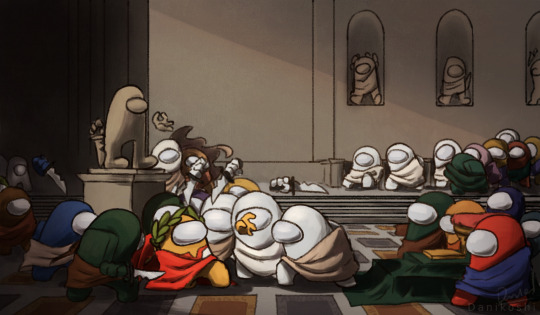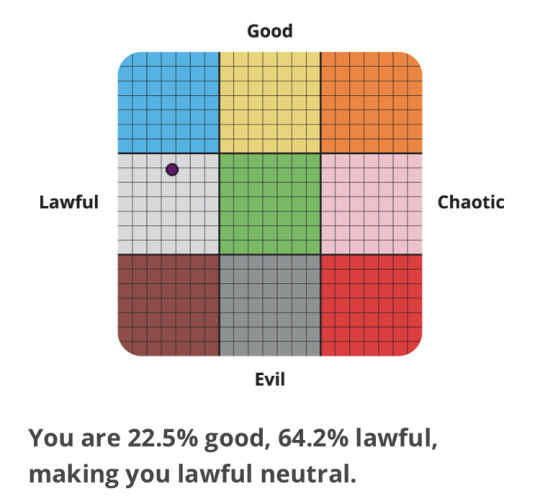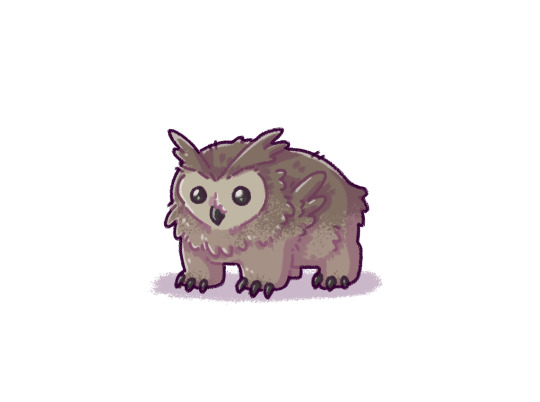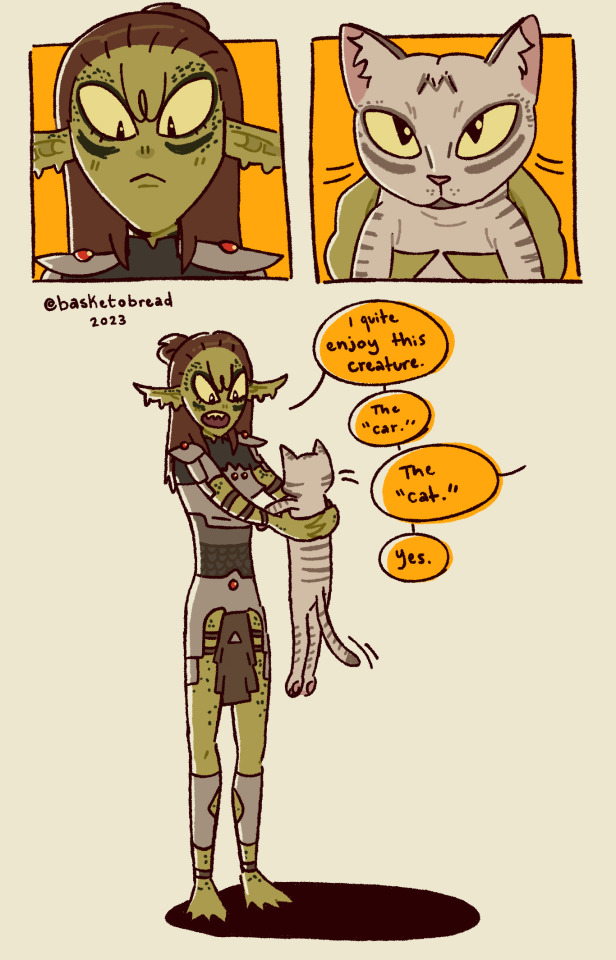adult I like space a lot... and I'm uber fucking political. Was gonna make this a space specific blog but now it's just general- fandom and political shit in here too.
Last active 3 hours ago
Don't wanna be here? Send us removal request.
Text
Holy Mother of fuck physics might be the death of me.
But oh how I love her.
(Deadass called Physics my lover today with "She is my lover, and I am but a man smitten by her beauty" y'all I am aroace)
#galaxies#astro#space#space is cool#space tism#physics#physics tism#queer love for physics ig#legit kept me from crashing out from us politics today#can't crash out over a proposed ban of guns on my people (trans)#that shit never goes well.
0 notes
Note
apologies for the Questions, i'm just Curious :>
if nebulas are huge gassy areas, does that mean (theoretically), we could speak (sound needs a medium to travel) there??
No need to apologize for asking questions! I'm happy to answer. Where I can at least :3
Theoretically,,, yes, but the areas are far less dense than it is on earth so the sound produced would be unable to travel far if at all.
6 notes
·
View notes
Note
asking for a story idea, is it possible for some area in space to be completely black and white?
(and by extension (though i suppose this is more of a biological(?) question) , is it possible to see in black and white due to,, something space-related)
I cannot answer for the biological standpoint, but technically I guess we do see stuff in both colour and black and white because of the atmosphere, so a similar concept could be applied to a fictional setting for sure.
In fact, I bet you there are a lot of areas in space that are actually black and white to our eyes. A lot of the photos we seen have filters and photo editing applied to it so we can see elements in those objects more visibly
#galaxies#information vomit ong#space is cool#space tism#space#Astro#astrophysics#colours#light be a spectrum....mahbe autisn#autism#i can't spell#visible light is all we can see lol
6 notes
·
View notes
Text

The Assussination of Julius Caesar (1805)
Repost of my art from this thread! Happy Ides, everyone!
1K notes
·
View notes
Text
Getting the sense D&D tiktok hates paladins so bad (except for Oathbreakers), and they're all wrong.
"Paladins are cops"
They don't have to be, and if the people you play with play paladins like that, they're boring.
"Paladins are too OP"
Buddy, if you're in a group where most are spell casters with low strength and charisma stats, you're gonna need that paladin to come through with their two-attack smiting power while the group benefits from their various different aura that provides buffs AS WELL AS PROVIDE MEDICAL HELP WITH THEIR LAY ON HANDS
"Paladins are boring"
Your group is boring. Like there are so many ways you can play a paladin that isn't "righteous god fearing cop" or "evil oathbreaker" so this is a skill issue and maybe the people in your groups who plays paladins need to get creative.
2K notes
·
View notes
Text
Tag game!!!
Do this quiz
And this picrew


And tag people(obviously)
Although anyone who wasn’t tagged here can of course join in, it’s open to anyone :3
@anartistwithamask @gummy-axolotl @shadowthegay @auseryoumayknow @copper-ichor @moonysfavoritetoast @alexthescaredenby @invaderxeya @fungal-boy-witch-yay @artists-void @hazbin-hotel-lucifer-simp @ka1-the-pr0ot @theautumnalcat
(btw you don’t have to be tagged to participate, you can just do it :])
18K notes
·
View notes
Text
D&D 5e supposedly has a GM shortage and idk maybe if the player culture of the game didn't treat GMing as a thankless job and the rules of the game as an issue to be fixed by the GM maybe things would be better. Ah well, who knows. Maybe a couple hundred more "we ruined the GM's campaign on purpose" memes will make people enjoy running the game better.
10K notes
·
View notes
Text

Wyll Ravengard ❤️🔥 Painted this completely unplanned and unexpected portrait last night. I guess the heavy rain traditionally brought me inspiration after all, even though it's now really hard to not read all sound of thunder as explosions. Unfortunately russian attacks on our homes happen more often than thunderstorms. Wonder if this will ever go back to normal. Either way, happy with our handsome boy, excited to do more BG3 art when I have more time between commissions and charity work. If you like my art, consider tipping! MY TIP JARS HERE ❤️🩹
16K notes
·
View notes
Text
Words to replace said, except this actually helps
I got pretty fed up with looking for words to replace said because they weren’t sorted in a way I could easily use/find them for the right time. So I did some myself.
IN RESPONSE TO Acknowledged Answered Protested
INPUT/JOIN CONVERSATION/ASK Added Implored Inquired Insisted Proposed Queried Questioned Recommended Testified
GUILTY/RELUCTANCE/SORRY Admitted Apologized Conceded Confessed Professed
FOR SOMEONE ELSE Advised Criticized Suggested
JUST CHECKING Affirmed Agreed Alleged Confirmed
LOUD Announced Chanted Crowed
LEWD/CUTE/SECRET SPY FEEL Appealed Disclosed Moaned
ANGRY FUCK OFF MATE WANNA FIGHT Argued Barked Challenged Cursed Fumed Growled Hissed Roared Swore
SMARTASS Articulated Asserted Assured Avowed Claimed Commanded Cross-examined Demanded Digressed Directed Foretold Instructed Interrupted Predicted Proclaimed Quoted Theorized
ASSHOLE Bellowed Boasted Bragged
NERVOUS TRAINWRECK Babbled Bawled Mumbled Sputtered Stammered Stuttered
SUAVE MOTHERFUCKER Bargained Divulged Disclosed Exhorted
FIRST OFF Began
LASTLY Concluded Concurred
WEAK PUSY Begged Blurted Complained Cried Faltered Fretted
HAPPY/LOL Cajoled Exclaimed Gushed Jested Joked Laughed
WEIRDLY HAPPY/EXCITED Extolled Jabbered Raved
BRUH, CHILL Cautioned Warned
ACTUALLY, YOU’RE WRONG Chided Contended Corrected Countered Debated Elaborated Objected Ranted Retorted
CHILL SAVAGE Commented Continued Observed Surmised
LISTEN BUDDY Enunciated Explained Elaborated Hinted Implied Lectured Reiterated Recited Reminded Stressed
BRUH I NEED U AND U NEED ME Confided Offered Urged
FINE Consented Decided
TOO EMO FULL OF EMOTIONS Croaked Lamented Pledged Sobbed Sympathized Wailed Whimpered
JUST SAYING Declared Decreed Mentioned Noted Pointed out Postulated Speculated Stated Told Vouched
WASN’T ME Denied Lied
EVIL SMARTASS Dictated Equivocated Ordered Reprimanded Threatened
BORED Droned Sighed
SHHHH IT’S QUIET TIME Echoed Mumbled Murmured Muttered Uttered Whispered
DRAMA QUEEN Exaggerated Panted Pleaded Prayed Preached
OH SHIT Gasped Marveled Screamed Screeched Shouted Shrieked Yelped Yelled
ANNOYED Grumbled Grunted Jeered Quipped Scolded Snapped Snarled Sneered
ANNOYING Nagged
I DON’T REALLY CARE BUT WHATEVER Guessed Ventured
I’M DRUNK OR JUST BEING WEIRDLY EXPRESSIVE FOR A POINT/SARCASM Hooted Howled Yowled
I WONDER Pondered Voiced Wondered
OH, YEAH, WHOOPS Recalled Recited Remembered
SURPRISE BITCH Revealed
IT SEEMS FAKE BUT OKAY/HA ACTUALLY FUNNY BUT I DON’T WANT TO LAUGH OUT LOUD Scoffed Snickered Snorted
BITCHY Tattled Taunted Teased
Edit: People, I’m an English and creative writing double major in college; I understand that there’s nothing wrong with simply using “said.” This was just for fun, and it comes in handy when I need to add pizzazz.
797K notes
·
View notes
Note
Real for the laughing. Astronomers have the goofiest fucking names for such important stuff LMAO
also you're welcome!
hello hello :DDD would you like to talk about space??? (i read the thread in the ace community)
i don't know how to tell you how much i know,, but ,,, random question time: what's your favorite celestial body (and why)?
No need to stress over how to tell me how much you know! Since we're on my blog I'll just yap teehee. Choosing a favourite celestial object is *so* hard because there is so many to choose from, but space do be huge. And old. Before I get to my two specific favourites I'll do an overview of what the major objects in space are. I will not being going over constellations.
Planets and Moons
I'm going to introduce them jointly as most people are familiar with what they are as we live on a planet with a huge moon haha. According to NASA, Merriam-Webster dictionary defines a planet as "any of the large bodies that orbit the sun in the solar system." However this was further specified by the IAU in 2006- likely because the old definition was specific to our solar system and very broad. The IAU provide a planet must satisfy the three following requires.
It must orbit a star (originally the wording was the Sun but modern astronomers use star in place as again- the Sun is our specific star).
It must be big enough to form a spherical shape by gravity.
It must be big enough to clear objects from its orbital path. (NASA seems to add "of a similar size" to this as, for example, Jupiter has the Trojan Asteroids in it's orbit.)
Pluto was demoted because of rule three specifically as it's orbit goes right into the Kuiper belt; and the additional dfn provided by NASA makes that case stronger with its moon Charon.
Moons are just smaller objects that orbit planets- at least that's what I will say on them as this was longer than I meant it to be.
Side note: other objects in solar systems that are not moons or planets or...dwarf planets are asteroids, comets and meteoroids. These are basically left over material from the formation of our solar system. They don't get their own section despite the fact they deserve it as I'm an...interstellar->extra/inter-galactic space nerd, not a moon/planet/asteroid/etc space nerd.
Stars and Brown Dwarfs
These objects, but maybe more specifically the Sun's stellar physics, is what drew my autistic little ass into astronomy/physics to begin with, and while technically Brown Dwarfs aren't stars....against my better judgement and my friend who researches them, I'm lumping them together here. Stars are giant balls of hot gas that are able to fuse, "burn", Hydrogen into Helium and so on.
Brown dwarfs are not as hot as stars are but they aren't planets because they also do go through nuclear fusion- but instead of the normal hydrogen it fuses a limited supply of a heavier isotope of it; deuterium into helium and releases energy like a star (as per Caltech). These objects are dark in visible light but glow in infrared. After these objects burn up their deuterium, they tend to go into a cool contracting phase while glowing. These are commonly called failed stars but that's a bit of a misconception because these are not stars nor are they planets. It irritates the shit out of my friend who studies these objects when they are referred to as such.
All brown dwarfs and stars do fit into the Hertzsprung–Russell (HR) diagram, which tells us how young, how bright, and how hot each object is. That diagram cuts off at M stars traditionally but brown dwarfs continue the pattern. These objects are also classified by spectral type which goes by the same information as the HR diagram.
Spectral types from hottest/youngest to coolest/oldest: O B A F G K M || L T Y
Lty are brown dwarfs.
Nebula
These objects are star forming regions in space! Often referred to as stellar nurseries by people- there's kind of no better way to describe these hydrogen rich areas, I say rich because hydrogen makes up about 90% of the gas present in these objects. Two of the popular nebulae are the Orion Nebula and Eagle Nebula (contains the Pillars of Creation).
Planetary Nebula
So despite the name- these are actually not planet forming nebula, astronomers thought they were at first hence the name...but then we figured out what they actually were. The name just stuck (unfortunately imo). Planetary nebula are actually dead stars that are not massive (aka stars of spectral types A to M). These are formed when the star explodes, ejecting it's outter layers to the space around it and leaving the core (now a white dwarf) in the center.
As a G type Star, our very own Sun will have this fate when it explodes. In like five billion years- doubt humans will last that long
Black Holes and Neutron Stars
These beautiful objects are often considered to be the most extreme objects in our known universe, and both are the products of O and B type (supermassive/massive) stars exploding. These stars supernovas are much more violent because of how big they are so more extreme objects are left in it's wake. Black holes are characterized by the following.
Infinite density; yeah you read that right. It's hard to explain but basically at the center of the black hole there is a singularity- matter gets crushed down to an infinitly small point and the laws of physics as we know them break down. Aka since the gravity at this point is infinity we can't make meaningful calculations here.
Event Horizon; basically where the "black" part of the black hole begins. It is the surface of the black hole, but unlike the earth's or even the sun's, it is the boundary of which escape is impossible, even for light, which is why we see a sphere of black with light around it.
Black holes also have accretion disks, which are dust, rocks, and other matter that are swirling around/toward, typically, a black hole in the center. These are moving so fast that friction causing them to burn. However black holes are not the only objects with accretion disks; other massive bodies like protostars can have these too. Quasars are black holes with super fucking bright accretion disks that emit electromagnetic radiation, they are also referred to as AGN as they are the cores of galaxies. Most cores of a galaxy has a core that has gone through this short phase- including our own.
A common misconception: they are not like roombas sucking things into them, their extreme gravity is *pulling* things into it- it's like how meteors (that burn up in the sky) and meteorites (survived their burning) fall onto Earth.
Neutron stars are formed when the core is 1-3 solar massives (basically mass of the sun times 1-3) collapse, but the formed neutrons (from the protons and electrons smacking eachother in the formation) are strong enough to stop further collapse. Any star with more massive cores become black holes. These are characterized by the following;
Extreme, not infinite, density. Often these stars have masses greater than the sun condensed down into like. The size of a city. Super small, but super dense.
Critical case of the zoomies: but like...spinning zoomies. These spin super fast- and because they spin super fast they can emit beams of radiation making them into a Pulsar.
Strong ass magnetic field, like trillions of times stronger than the Earth's. This is because the magnetic field lines of the old star were compressed down- packing it much tighter which increases the magnetic flux (measure of field lines passing through an object- but let's simplify it more and call it field strength). If they are even *stronger*, like a thousand times stronger than the normal trillions, they are then Magnetars.
Star Clusters
There are three distinct types of these clusters ahem, groups of stars.
Globular Clusters: These are groups of really old stars that form and ar tightly packed together. These usually form in the outskirts of galaxies, known as the halos. These also have a more spherical shape than the other two. I think of these as like...the retirement homes of stars. A popular example of one is the Great Hercules Cluster (M13).
Open Clusters: These are groups of younger stars (with a few old ones) that typically form in the arms of spiral galaxies (galaxies like our own). They are not as tightly packed like globs, hence the name open. They're like the neighborhood full of kids and teens basically. A very popular example is actually the Seven Sisters! (Known also as Subaru or Pleiades). You can see that one with the naked eye.
Embedded Clusters: These are groups of very young and newly forming stars. Basically the hospital full of newborns and baby stars. These clusters have a lot of gas too. This cluster is the precursor to both open and globular clusters. A popular example is the Trapezium Cluster within the Orion Nebula.
Embedded Cluster vs Nebula: The difference really is just that the embedded cluster is actively forming stars from my understanding tbh- ECs are basically open clusters with a lot of gas still whereas nebula are just huge gassy areas containing these.
Galaxies
Arguably the biggest objects in space- these are collections of all of the other objects mentioned gravitationally bound together. Mind you the definition commonly given specifically mentions billions of stars and surrounding gas. Typically, a galaxy will also have a black hole at the center. There are also several different types of these.
1. Elliptical Galaxies: These galaxies are characterized by being more spherical/ellitpical with billions of old stars. Globular clusters on fucking crack basically. They have minimal star forming regions and new stars usually end up forming as a result of collisions.
2. Spiral Galaxies: Unlike the prior type, these are characterized by being a disk object with arms (those with more prominent arms are barred spirals) that extend from the dense center. They have a lot more gas than Ellipticals and this have more star forming areas. Thus meaning, they're younger. Both Andromeda and the Milky Way are spirals.
3. Irregular Galaxies: These are galaxies with no defined shape and can't be defined as elliptical or spiral. They're often usually small....but there are cases of huge ass ones.
There are galaxies referred to as Starburst galaxies, they can be any of the forementioned types. They're only characterized by the higher than average star formation rate.
My Favourite two Objects
I cannot choose between these two objects so I'll hand over both.
Sagittarius A*: This is the supermassive black hole at the center of our very own galaxy- so I have a little silly attachment to it. Even though there are closer black holes- it's even my profile picture! And and and! I've been to a telescope involved in the Event Horizon Telescope mission- which was simply to get a picture of Sag A*
Triangulum Galaxy: This is a starburst spiral galaxy in the constellation....get this....Triangulum. This mother fucker is a triangle in a triangle and I fucking love that.
24 notes
·
View notes






